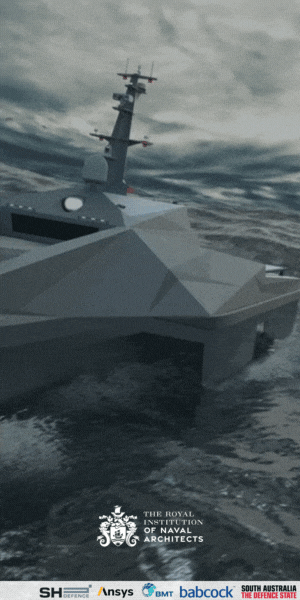Warship Technology: July/Aug 2017
HMS Richmond will be the first of 11 Type 23 frigates to receive the PGMU addition and alteration (A&A) embodiment.
Forming part of a wider Type 23 capability sustainment and life extension (LIFEX) programme, the PGMU has been developed to address existing shortfalls in power generating capacity while at the same time ensuring that onboard generation capacity can meet power demand consequent of new weapon and sensor equipments being introduced to the class. The update will also address risks associated with growing obsolescence of the existing MCAS system.
The Royal Navy’s 13 Type 23 frigates are currently fitted with four Paxman Valenta 12 RP2000CZ diesel generators, the design of which dates back to the late 1960s. These have suffered from a long-term decline in reliability, and reduced generating capacity in hot environments (an engine nominally rated at 1.3MW may only deliver 1MW in warm weather conditions).
Electrical power generation
The PGMU programme, which will replace the main generators and conversion equipment, adapt the switchboards and change the MCAS system, is intended to regain and maintain full safety, availability and capability in terms of electrical power generation on the Type 23 frigate. This will allow for operations in all theatres out to end-of-life, while at the same time minimising costs of ownership; on current projections, the last Type 23 in Royal Navy service will not retire until the mid-2030s.
The overall increase in power generation capacity required to reach end of life is approximately 20%; with no available compartment growth space within the ship design, additional power must be generated within the current space allocation, necessitating the introduction of new prime mover and generator equipments offering increased power density.
Invitations To Tender (ITTs) for the PGMU equipments were originally batched into four lots: diesel generators (Lot 1); 600/440V power conversion (Lot 2); switchboards (Lot 3); and MCAS (Lot 4). Lot 3 was subsequently withdrawn, and will be met under existing arrangements: the existing switchboards will be updated in-situ to cope with the additional power that will be delivered by the updated generation equipment.
The Lot 1 ITT set out the need for the supply of diesel generators, rated in the power band 1.4-2MW, to fit within the existing diesel generator space and weight envelope in the Type 23 machinery rooms. Following evaluation of the rival bids received from MTU and MAN, the Ministry of Defence’s Defence Equipment and Support (DE&S) organisation in April 2015 awarded MTU (part of Rolls-Royce Power Systems) a £68 million (US$86 million) contract for the supply of 12V 4000 M53B diesel generator sets, rated at 1.65MW, for delivery from late 2016.
DE&S has placed a separate contract, valued at £12 million, on Hitzinger UK for the supply of voltage converters to meet the requirements set out under PGMU Lot 2. A single-source contract, valued at £18 million, was placed on Rolls-Royce in January 2016 for the MCAS update (Lot 4).
The MCAS update is designed to address obsolescence, and incorporate changes to the control and surveillance system that the new generating equipments introduce. This entails some changes to hardware
and the human machine interface, as well as a full software conversion into a
modern language.
The PGMU systems integration task – referred to as Lot 5 – covers the functional integration of the various elements of the PGMU system, together with the supply of supporting safety certification and security accreditation, the delivery of a coherent training package, and the update of all documentation affected by the new and updated equipment. Babcock Marine and Technology was awarded a £3.6 million contract for this task in late 2016.
Technical Authority
While the system integration role does not carry the responsibility for procuring the PGMU equipment, it does come with formal delegation of Technical Authority over system design. This is intended to ensure that system requirements are achieved in the absence of a prime contractor.
PGMU embodiments are planned to take place at HM Naval Base Devonport during planned upkeep periods. HMS Argyll and HMS Lancaster are the two Type 23 frigates not receiving the PGMU package.
The PGMU project passed a System Readiness Review in January 2017, at which time the design of the system and the maturity of the installation were reviewed to assess whether the solution would be ready to implement during Richmond’s forthcoming upkeep period.
In its entirety, the PGMU A&A package – the biggest design change for the Type 23 platform since build – will involve the installation of nearly 600m of new pipework and over 8km of new cable. Work will require the complete strip out of the Upper Auxiliary Machinery Room (with only the High Pressure Air Compressor remaining), partial strip out of the Forward Auxiliary Machinery Room (with significant changes to pipework and seatings) and new uptakes and downtakes for the diesel generators.
3D computer-aided design technology has been adopted by Babcock, as systems integrator, to support the design and production process. In the first instance, each affected compartment was laser scanned from 10 different positions to create a detailed digital image. Designers then removed redundant systems from the model, and overlaid the new systems in software. This has allowed the production of accurate 2D drawings from the model, and the generation of digital data that can be used to create the machine codes required by computer numerical control (CNC) machines.
According to Babcock, the use of 3D CAD technology allows collisions and conflict to be quickly identified, and enables the use of virtual reality in design reviews to give a greater spatial appreciation and develop a common understanding. Furthermore, it has provided an opportunity to manufacture accurate pipework by CNC rather than traditional wire methods, so realising a significant saving in production hours.


